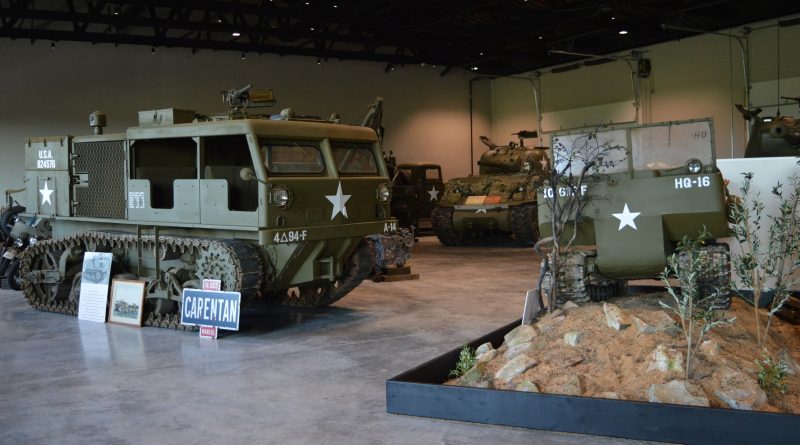World War II American Experience Offers Accessible Approach to History
GETTYSBURG, PA – It has long been argued that Franklin Roosevelt’s famous catch phrase “Arsenal of Democracy” actually originated with playwright Robert E. Sherwood. But when FDR used the unforgettable expression in late 1940 as a national wake-up call, most of Europe was already lost to the Nazis – leaving a battered British empire as the final buffer between the Axis powers and America’s shores.
Thankfully, the American public answered the president’s call – first by bolstering our allie’s defenses, then by throwing our full will and might into winning the war.
Paying homage to the success and sacrifices of that endeavor is an exciting new museum near Gettysburg, PA, aptly named the World War II American Experience (WWIIAE).
Founded by longtime militaria collectors Frank and Loni Buck – along with their son Adam – the non-profit WWIIAE is somewhat unique amongst relic repositories; in that, most of the vehicles on display still run like the day they were first put into action.
Don’t believe me? Then ask the feisty grandmother who got to sit in the driver’s seat of a “Sherman” tank.
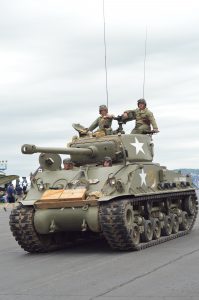
(Anthony C. Hayes)
We had a chance to say “Hi” to granny, and get an after-hours look at the WWIIAE recently, while the museum was hosting a special Friday night “Tank Talk” program.
“With the exception of maybe two or three pieces, everything in the collection runs,” explained Adam Buck, as we slowly made our way through the 36,000 square foot museum.
“We have two ‘Sherman’ tanks, which are a huge draw, for obvious reasons. People tend to recognize them from the movies. They’re big; they’re loud; they’re tracked; and they have a large gun on them.”
Adam then directed our attention to an old army ambulance, which he said, “Could make a 100-mile trip tonight, if you’d like.
“For restorations and maintenance, we try to use original parts or exact reproductions. We go to great lengths to keep these vehicles in original operating condition.”
Adam told us that, after the war, many decommissioned military vehicles saw use in the farming, logging, and construction industries. One of the museum’s two “Sherman” tanks, for example, had been used by a Texas rancher for clearing his land.
Bringing these machines back to their original condition is a time-consuming process, and it can be a costly labor of love. But every piece in the collection helps to tell the American story.
One necessary sacrifice to originality is the museum’s reproduction Red Cross Clubmobile.
“The American Red Cross sent 75 of these trucks over to Europe during World War II. Every one was manned by volunteer women, who would follow the army as it advanced, and then meet the returning troops with coffee and doughnuts.
“Unfortunately, none of the original Clubmobiles still exist.
“So we’ve had a passionate crew of volunteers resurrect a version of a Clubmobile, and try and replicate it to as original as possible.”
MORE THAN MACHINERY
Jody Wilson – Director of Outreach for the World War II American Experience – said that, in addition to its 80-plus vehicles, the museum has over 200 uniforms which have either been donated or loaned by individuals – including the Buck Family.
There are also recognizable home-front items, such as a Zenith console radio, assorted children’s toys, and a stepside Oriole gas stove which was made here in Baltimore.
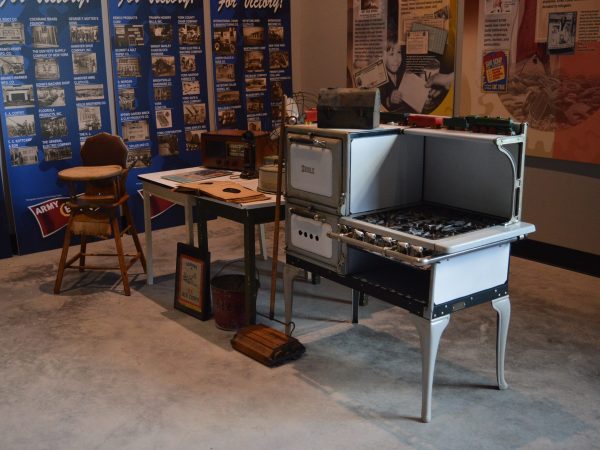
Consistent with the museum’s desire for a broad community outreach are the programs and plans the new entity has in store.
“As you know, there will be a USO-style dance here on July 23rd during our Military Weekend at World War II American Experience.
“Our first Family Day will be held August 13th and will include hands-on areas for children. We’ll also have scavenger hunts, vehicle interactions, and a ‘Hike with Ike’ D-Day themed obstacle course.”
We asked Jody if forthcoming activities might include rides on the planned tank track?
“Construction of the tank track on the museum’s 30-acre property is our project for the upcoming year. Rides can be very costly, but we have discussed offering rides during special events, when the vehicles are already being used for demonstrations,” she said.
PERSONAL CONNECTIONS
It might be easy to get caught up with the displays and forget that for every ambulance, armored vehicle and Clubmobile which rolled along the front, thousands of lives were touched by the war in an intimate way.
“We are really just starting to receive (personal) donations, now that we actually have the museum open,” said Loni Buck. “I think people are drawn to a place where they can take some comfort in knowing that remembrance of a loved one, who served our country in a time of need, will remain in perpetuity.
“With some, it is the story that accompanies the artifact that makes the donation special. With others, the story embedded in the item or the artifact itself is unique and interesting. In all cases, the human connection remains with us, and it is presented in a way that is relatable.”
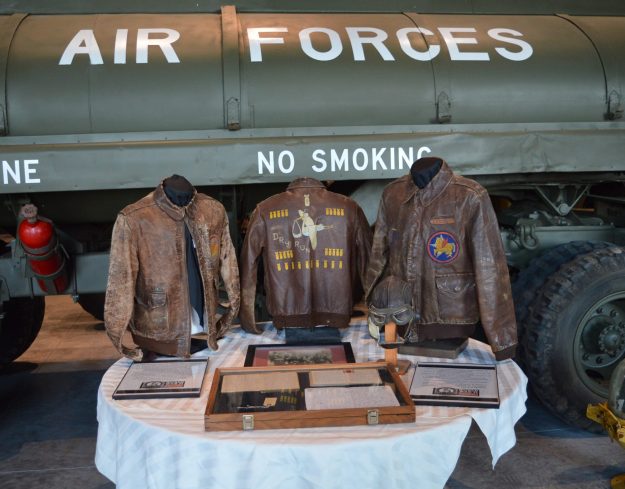
Pausing at an Air Force exhibit, I briefly shared with Loni the story of my late Uncle Bill – a B-17 flight engineer who spent nearly a year in Pomerania as a POW.
“My uncle Ted (1st Lt.Theodore Roosevelt Zimmerman) was the co-pilot of the B-24 Daisy Mae,” recalled Loni. “My father was the youngest of eight and Ted was his next older sibling.
“Ted was with the 8th Air Force, 448th Bomb Group, 715th Squadron. He and his entire crew were lost during the war. They were stationed in Seething, England. The mission from which the plane never returned was on January 7, 1945.
“My dad shipped out to (the Pacific theatre) three days later.
“The more stories and donations we hear, see and receive,” said Loni, “the more we find that most of us are really quite united by these connections to this significant event of the last century.”
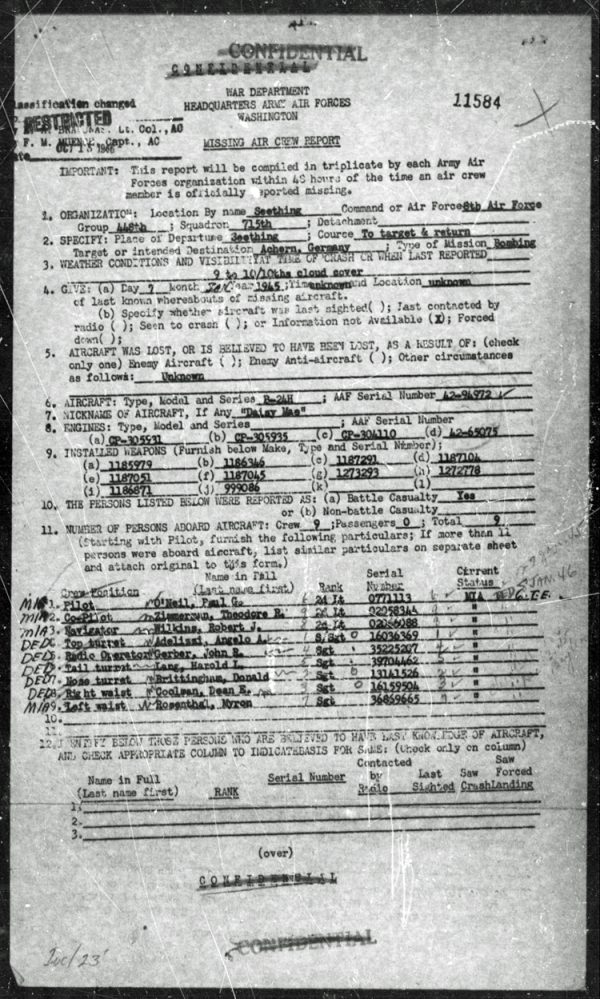
Copyright 2022 Baltimore Post-Examiner. All Rights Reserved

Anthony C. Hayes is an actor, author, raconteur, rapscallion and bon vivant. A one-time newsboy for the Evening Sun and professional presence at the Washington Herald, Tony’s poetry, photography, humor, and prose have also been featured in Smile, Hon, You’re in Baltimore!, Destination Maryland, Magic Octopus Magazine, Los Angeles Post-Examiner, Voice of Baltimore, SmartCEO, Alvarez Fiction, and Tales of Blood and Roses. If you notice that his work has been purloined, please let him know. As the Good Book says, “Thou shalt not steal.”

